A Farmer's Year
Working Through The Seasons
Throughout history A Farmer's Year has followed a similar pattern.
In Spring
Preparations were made for the planting of crops. Dung would be spread on the fields then horses dragged the harrows and rollers around the fields in readiness for the seed to be sown, either by hand or using a broadcaster. Spring time was also the time for lambing, and calving. Farmers, then as now, would also have to cope with the weather.
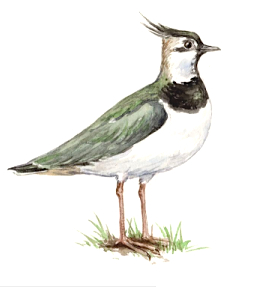
The lapwing or peewit, known to north east farmers as a "teuchat."
The "Teuchat Storm" - a bout of bad weather when teuchats are nesting and the "Gab o’
May" - more bad weather after mid May.
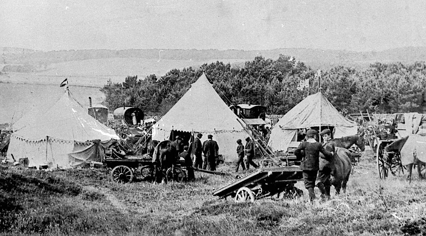
The Whitsun Hiring Fairs and Feeing Markets. This photograph was taken at Aikey Brae near Mintlaw. As well as hiring men and women to work the farms horses were traded and people enjoyed fairground rides and side shows.
In Summer
Men cut and dried peats to build up a supply of fuel for the winter. The cornyard would be tidied in preparation for the harvest and the fields of turnips would have to be hoed to thin out the plants and get rid of the weeds. Cattle would be taken to the Mart to be sold.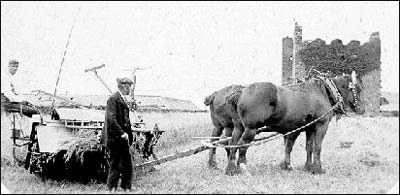
Cutting the hay for horse and cattle feed near the ruins of Eden Castle, Bowiebank Farm, Banffshire.
The summer also meant trips to the local shows. The Turriff or "Turra" Show is still a very important event in the North East farmers' year and one everybody looks forward to.
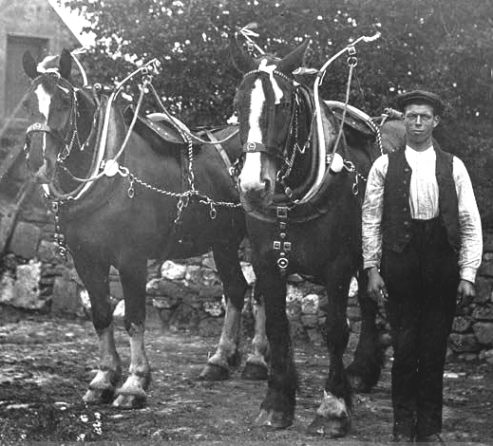
Horseman William Gordon of Touxhill Auchnagatt, showing his pair of Clydesdales with polished brass and leather tack, groomed and ready for the show-ring. The shows gave the horsemen an opportunity to display their horses in all their finery.
Autumn
Harvest began. Crops were cut with the binder, while those which were lying flat on the ground, perhaps because of the weather, were cut by hand with scythes. It would then be formed into sheaves and set up in stooks to dry.
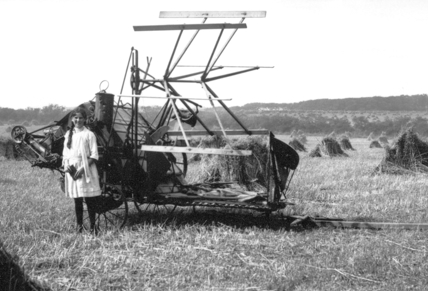
Here we see a young girl standing by a binder. Why do you think we know it was taken on a Sunday?

A woman helps load up another cart with hay.
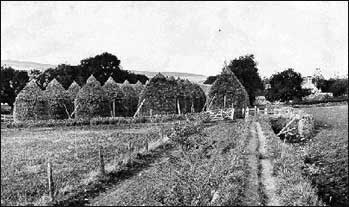
Building the stooks into haystacks which were then thatched.
Just like today, all this was very dependent on the weather!
October: Potatoes lifted
The mid October school holidays in the North East are still known as the "Tattie Holidays." In the past school children were employed at the farms at this time to help lift the potatoes.
In Winter
Turnips were pulled and ploughing took place over the next few months in all types of weather.
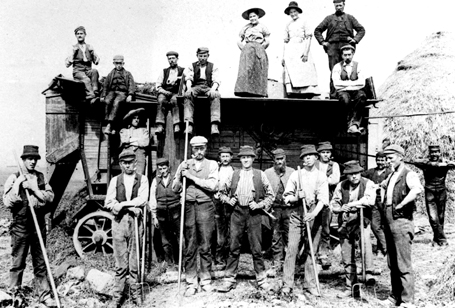
The Threshing Mill arrives to thresh the stacks of corn and barley.
The cattle would now be inside so had to be fed and taken care of.
November: The Martinmas hiring fairs and feeing markets take place in the market towns.
December:Animals had to be fed every day so Christmas Day, for many of the farm labourers, was just like any other.
